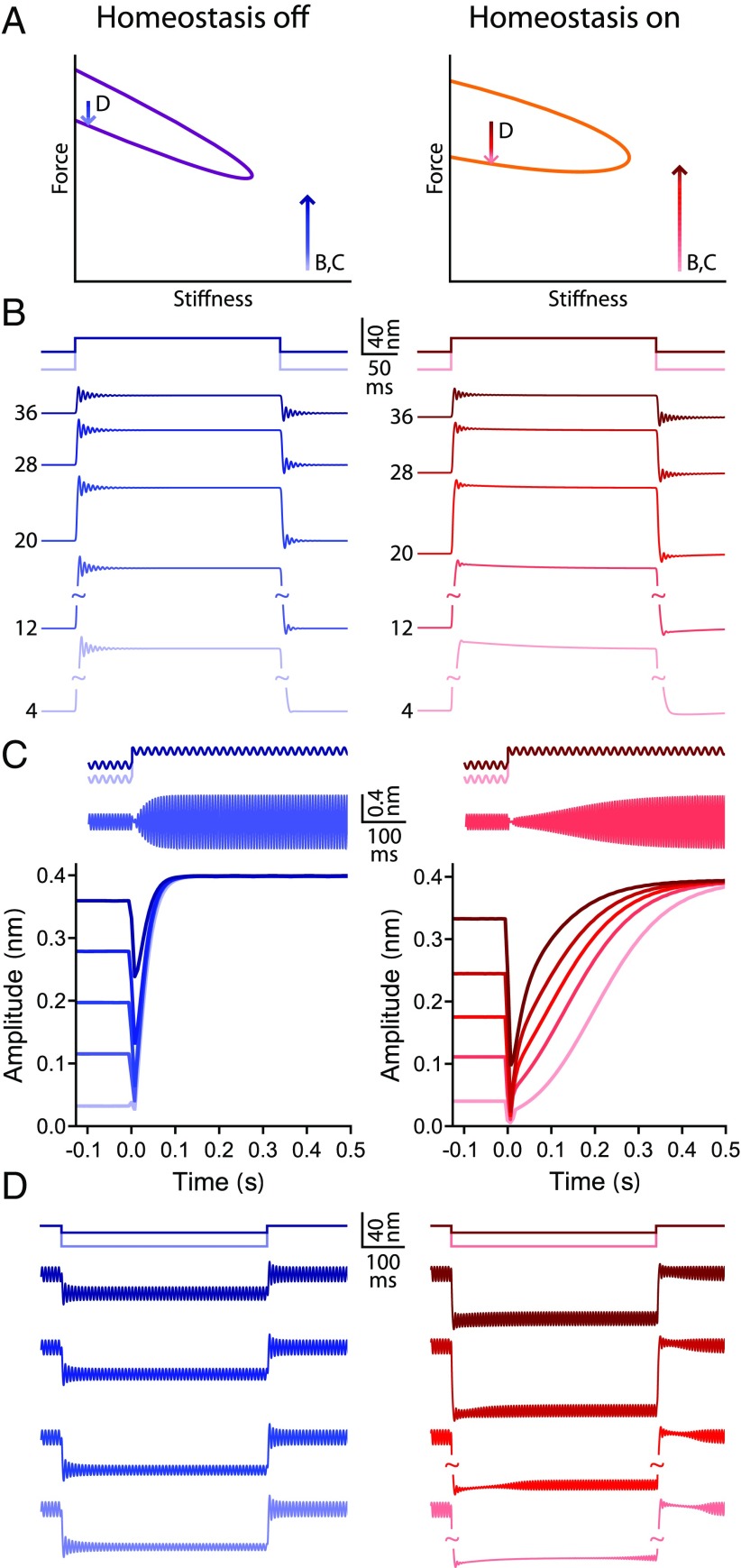Fig. 7.
Hair bundle behaviors associated with homeostasis. A schematic diagram showing the locations of the operating points and directions of the force steps used; labels indicate to which panel(s) each arrow applies. The Hopf bifurcation curve is colored purple when homeostasis is off (left) and orange when homeostasis is on (right). () The response to positive force steps for a bundle poised in the quiescent, underdamped region of the state diagram. Traces are labeled by the initial operating point’s peak sensitivity in kmN-1. All force steps bring the bundle to the same reference operating point (tip of B,C arrows in ), which has a peak sensitivity of 40 kmN-1. The peak sensitivity at the reference point is a maximum as a function of the constant force. The stimulation protocols for the largest and smallest steps are shown schematically above the traces. (B, Left) When homeostasis is off, the ringing after the onset of the force step is not appreciably affected by the initial operating point. (B, Right) When homeostasis is on, the size and duration of the ringing diminish as the distance between the initial and reference operating points increases. () Schematic protocol of the force steps with a superimposed sinusoidal driving force delivered to a bundle. The frequency of the sinusoidal component is equal to the bundle’s resonant frequency at the reference operating point (tip of B,C arrows in ), and the sinusoid’s amplitude is 0.01 pN. The bundle’s initial operating points and the size of the force steps are the same as in . Representative traces are shown when homeostasis is off (C, Left) or on (C, Right). (C, Left) When homeostasis is off, the bundle quickly reaches a steady state after the onset of the force step. (C, Right) When homeostasis is on, a greater interval is needed for the bundle to reach a steady state. () Response to negative force steps for a bundle poised in the self-oscillation region. Lighter shades of blue indicate larger step sizes. The schematic diagrams above the traces show the stimulation protocols for the largest and smallest force steps. The initial operating points for this protocol are chosen so that the bundle’s oscillation amplitude is 17 nm in the absence or presence of homeostasis. The bundle’s oscillation amplitude reaches a maximum as a function of the constant force at the initial operating points. The bundle’s operating point is contained within the self-oscillation region throughout the entire protocol (D arrow in ). (D, Left) When homeostasis is off, spontaneous oscillations are not interrupted by the force steps. (D, Right) When homeostasis is active, a delay precedes the return of spontaneous oscillations at the onset and offset of the force step, and this delay lengthens as the size of the force step increases. All simulations are generated by using model II, with parameter values listed in SI Appendix, Table S2.

